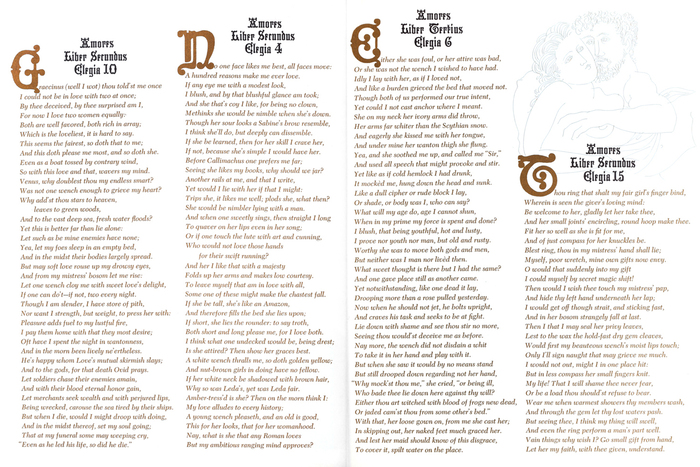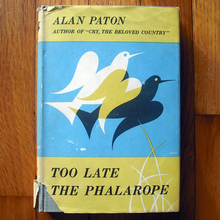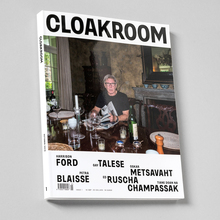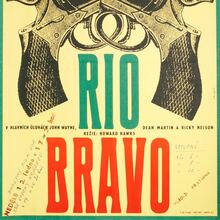“Ovid: Love Poems” in Eros, no. 2

The first issue of the short-lived Eros magazine was released on Valentine’s Day 1962. The feature shown here is from the second issue that followed in summer, with extracts from Ovid’s Amores, illustrated by Eugene Karlin (1918–2003). While the poems are set in Caledonia Italic, Herb Lubalin dug up a peculiar blackletter for titles and initials.
The soft textura with ornamented caps was introduced by Figgins in England in 1847, under the name Tudoresque, as documented by Nicolete Gray. Two decades later, Bruce in the United States showed a single Double small-pica (≈22pt) size as Medieval which is different from Figgins’s Two-line double pica (≈44pt) in the details and the amount of ornamentation. In 1878, Medieval was shown by MacKellar, Smiths & Jordan in three sizes; Two-line pica (≈24pt), Two-line English (≈28pt), and Four-line small pica (≈44pt); with considerable differences across them. While the largest size appears to match Figgins’s cut, the smallest appears to match Bruce’s. After absorbing MS&J in 1892, ATF continued the design in three sizes as Mediæval No. 10, at least until 1900. For more info and links, see see the typeface page.

MacKellar, Smiths & Jordan’s Medieval as shown in a specimen from 1888. Spot the differences across the sizes, for example in A C l r t 8. To further complicate the comparison, there were alternates, see the two forms for t in the largest size.
The letterforms in Eros match the ≈28pt size, which is distinguished by upright i dots, among other things. It’s not clear to me which source Lubalin used. Solotype had a phototype adapatation as Medieval, but that one is based on the ≈44pt size. Since 2010, there is a digital interpretation of that largest size, based on a showing in the 1882 edition of Hill’s Manual of Social and Business Forms. It was made by Brian J. Bonislawsky and named MFC Hills Medieval.

The accompanying text (by editor Ralph Ginzburg?) reads:
Ovid, the greatest of classical love poets, dedicated not only his work but also his life to the exaltation of passion. Born outside Rome in 43 B.C., he forsook a life of aristocratic leisure to devote himself to the elegizing of love. His poems were an instantaneous success; his Loves, Heroines, Art of Love and Love Cures were the delirium of his day. The power of his muse brought Rome’s most desirable women to his feet, and from all accounts it is evident that he exploited their admiration to the fullest. Ovid was three times married and innumerable times scandalized. In the end, it was love which led to his downfall. Emperor Augustus, enraged by a scandal in which his granddaughter’s name was linked with that of the aging poet, banished Ovid to an outpost on the Black Sea. There, embittered, he died in 18 A.D. Ovid’s influence over succeeding centuries of literature and art is unparalleled. Shakespeare, Spenser, Cervantes, Milton, Swift, Goethe, Rodin, Picasso, T.S. Eliot are among those who have acknowledged their debt to Ovid. The finest English translations of Ovid were done by Christopher Marlowe. Unfortunately these translations are not widely read, mainly because timorous educators deem them too erotic for their students. As a result, generations of readers. particularly in the United States, have come to know Ovid more by his name than by his works. EROS is pleased to present on these five pages several of the Marlowe translations of Ovid’s earliest and most passionate poems, Loves. These alone prove the aptness of the title conferred upon Ovid by Chaucer in the Canterbury Tales: “Venus’ clerk.”

Via a request by Pookeyblow at Font ID.
Formats
- Magazines/Periodicals (1610)
Topics
- Lifestyle (1196)
Designers/Agencies
- Herb Lubalin (31)
Tagged with
- Eros (magazine) (1)
- magazine features (120)
- spreads (70)
- Ovid (3)
- poetry (311)
- love (31)
- sexuality (61)
- erotica (33)
- nudity (59)
- translations (295)
- Christopher Marlowe (1)
- two-color (849)
- colored body text (710)
- two columns (430)
- ragged right text (777)
- italics (399)
- initials (162)
- blackletter (254)
- typeface profile (82)
- illustration (1267)
- 1960s (622)
Artwork location
- United States (8300)
- New York City (2329)













































1 Comment on ““Ovid: Love Poems” in Eros, no. 2”
Did the A also try and get gum out of its hair – like Melvin Van Horne?